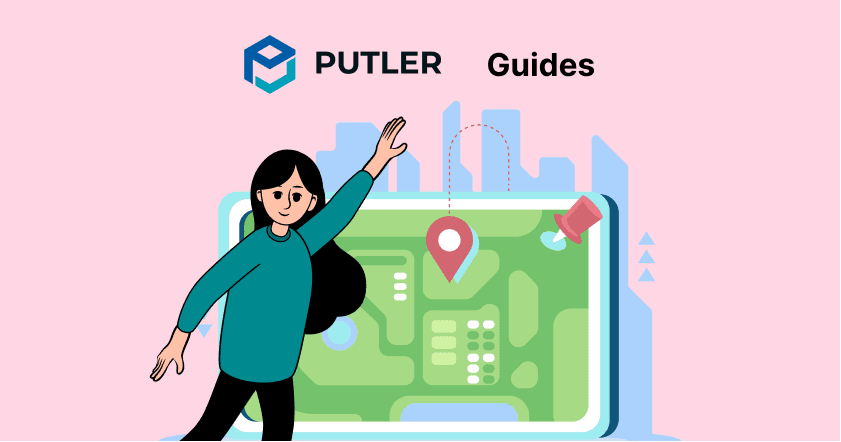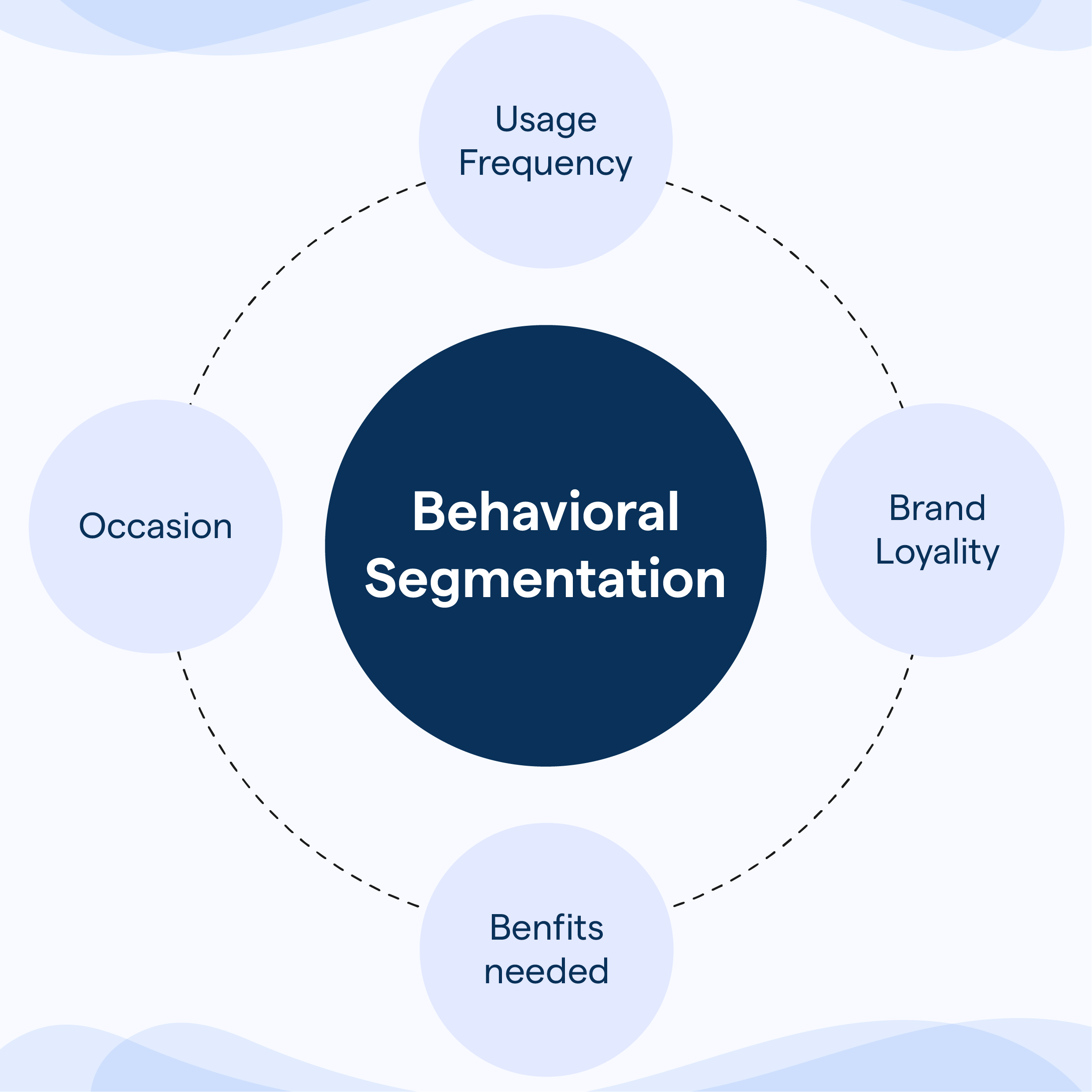Data is meaningless without context. Behavioral segmentation bridges that gap, converting raw actions like page visits, product purchases, abandoned carts into a crystal-clear picture of what drives your audience.
It’s where strategy meets precision for maximum impact.
But what exactly is behavioral segmentation?
And how does it connect back to customer segmentation?
What is behavioral segmentation?
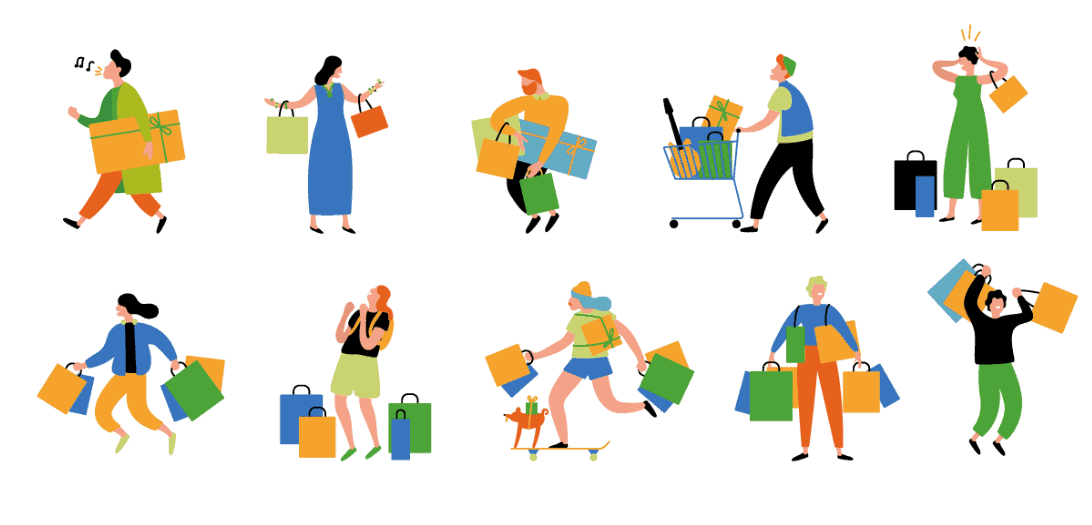
Source: Conjointly
You know how everyone shops differently? Some of us are bargain hunters, while others are impulse buyers who grab whatever catches their eye.
Behavioral segmentation is like being a people-watching expert who groups customers based on their shopping patterns and habits.
It’s about understanding not just who your customers are, but also how they behave, what motivates them, and what drives their decisions.
This makes it easier to define precise customer segments.
Ready to find out why this approach is so powerful? Let’s explore its importance in your marketing strategy.
Why is behavioral segmentation important for marketing?
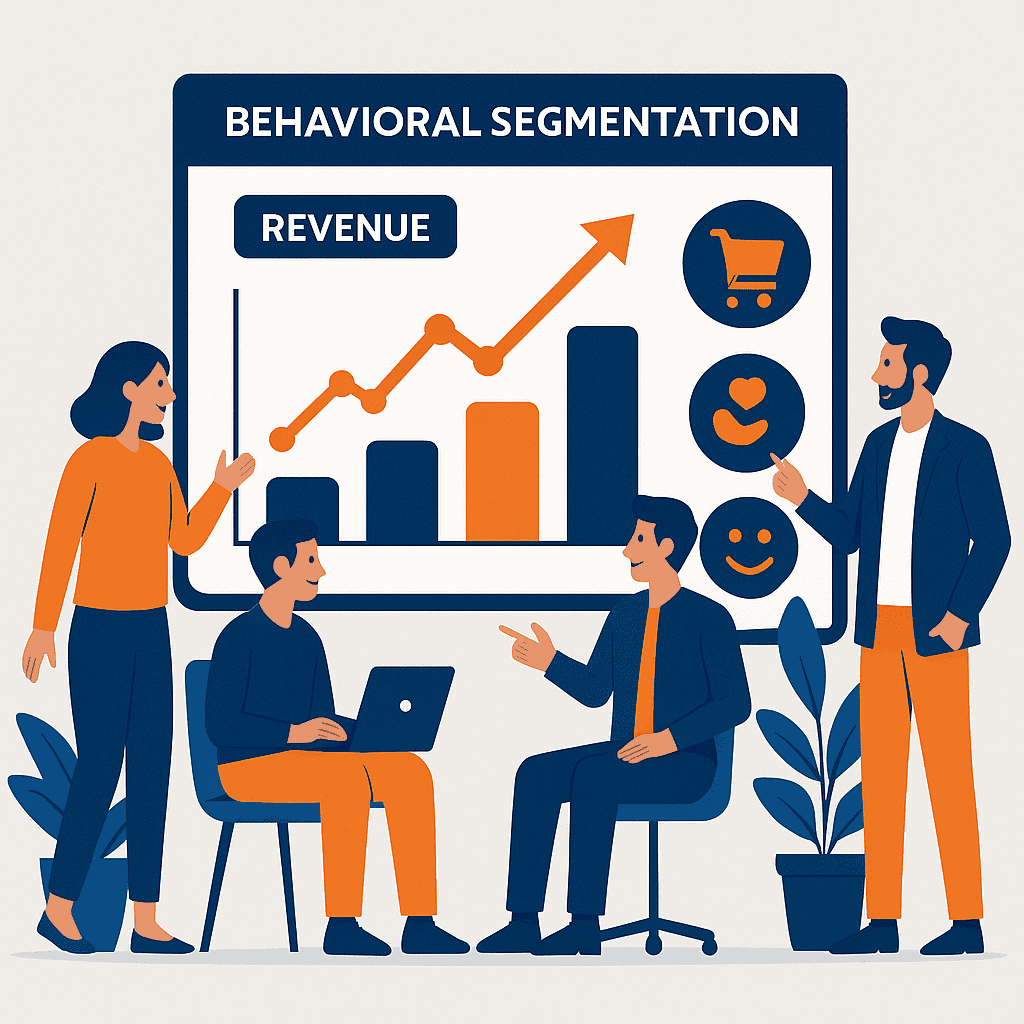
Using behavioral segmentation in marketing can drive 58% of all revenue, while segmented campaigns have shown a 760% increase in revenue.
Customer behavioral segmentation helps businesses with several benefits, including:
- Creating that “they really get me” feeling for customers
- Saving money by targeting the right people with the right message
- Boosting sales by knowing exactly when and how to reach out
- Building stronger relationships by anticipating customer needs
- Staying ahead of the competition by really understanding their market
Apart from these, behavioral segmentation also lets you uncover richer customer insights that fuel smarter, more effective campaigns.
Now, let’s dive into those different types of behavioral segmentation.
Types of behavioral segmentation in marketing
Here are different types of behavioral segmentation –
- Benefit-sought segmentation
- Loyalty-based segmentation
- Purchasing behavior segmentation
- Occasion and timing-based segmentation
- Customer journey segmentation
Each type offers unique insights to help you craft highly personalized and effective marketing strategies.
Let’s check them out in detail.
What is benefit-sought segmentation?
This is all about understanding what people want to achieve when they make a purchase. It’s like knowing whether someone shops because they want quality, convenience, or the best price. We group people based on the main benefit they’re looking for.
Imagine shopping for running shoes. Some people want cushioning for comfort, others need support for long distances, and some just want something that looks cool. This type of segmentation groups people based on what they’re truly after when they make a purchase.
What is loyalty-based segmentation?
Think of this as grouping people based on how much they love your brand. Some are super loyal and keep coming back, while others might just stop by occasionally. It helps us understand who our true-blue customers are.
- Die-hard fans who won’t shop anywhere else
- Regular customers who like you but also shop around
- Occasional buyers who pop in when it’s convenient
- One-time shoppers who might need a little nudge to come back
One way to measure this is through RFM analysis.
What is purchasing behavior segmentation?
This segmentation is based on the purchase patterns of customers. Are they the type to:
- Research for weeks before buying?
- Jump on every sale?
- Only buy premium products or services?
- Need lots of convincing?
Think about how differently people buy smartphones – some pre-order the latest iPhone without blinking, while others compare specs and prices for months!
What is occasion- and timing-based segmentation?
Occasion-based segmentation is about understanding when people buy things.
Some might shop regularly, others only during special times. It’s about catching the rhythm of when people are most likely to buy.
This is all about the “when” of shopping. Like how some people:
- Only buy winter clothes during end-of-season sales
- Stock up on groceries every Sunday
- Purchase gifts right before the holidays
- Buy coffee every morning at 8 AM sharp
What is customer journey segmentation?
This is about knowing where someone is in their relationship with your brand. Are they just getting to know you? Have they been with you forever?
This is like mapping out a road trip but for shopping. Where’s your customer on their journey?
- Just starting to look around (awareness)
- Comparing options (consideration)
- Ready to buy (decision)
- Already bought and using the product (post-purchase)
Key things to remember:
- People can fit into multiple groups
- These groups can change over time
- Understanding these differences helps create better experiences
- It’s all about connecting with people in the right way at the right time
The beauty of customer behavioral segmentation is that it helps us understand and serve people better, making their experience more personal and enjoyable.
What are the best behavioral segmentation strategies?
Without further ado let’s dive into the strategies.
Segment Based on Customer Loyalty

Look at it this way – not all your customers are the same. Some buy from you all the time, others pop in once in a blue moon.
This strategy is about spotting these differences and treating each group accordingly.
Set up something like a basic rewards program – maybe silver, gold, and platinum tiers. When someone starts buying more, they move up and get better perks.
Plus, you can quickly spot when regular customers start shopping less and try to win them back.
Leverage Location-Based Targeting

This one’s pretty straightforward – what works in New York might not work in Texas, right?
Keep track of what sells well in each location, and adjust your prices and products accordingly.
Maybe your winter coats fly off the shelves in Chicago but barely move in Miami.
Use this info to stock the right stuff in the right places and run promos that make sense for each area.
Optimize Pricing for Different Devices
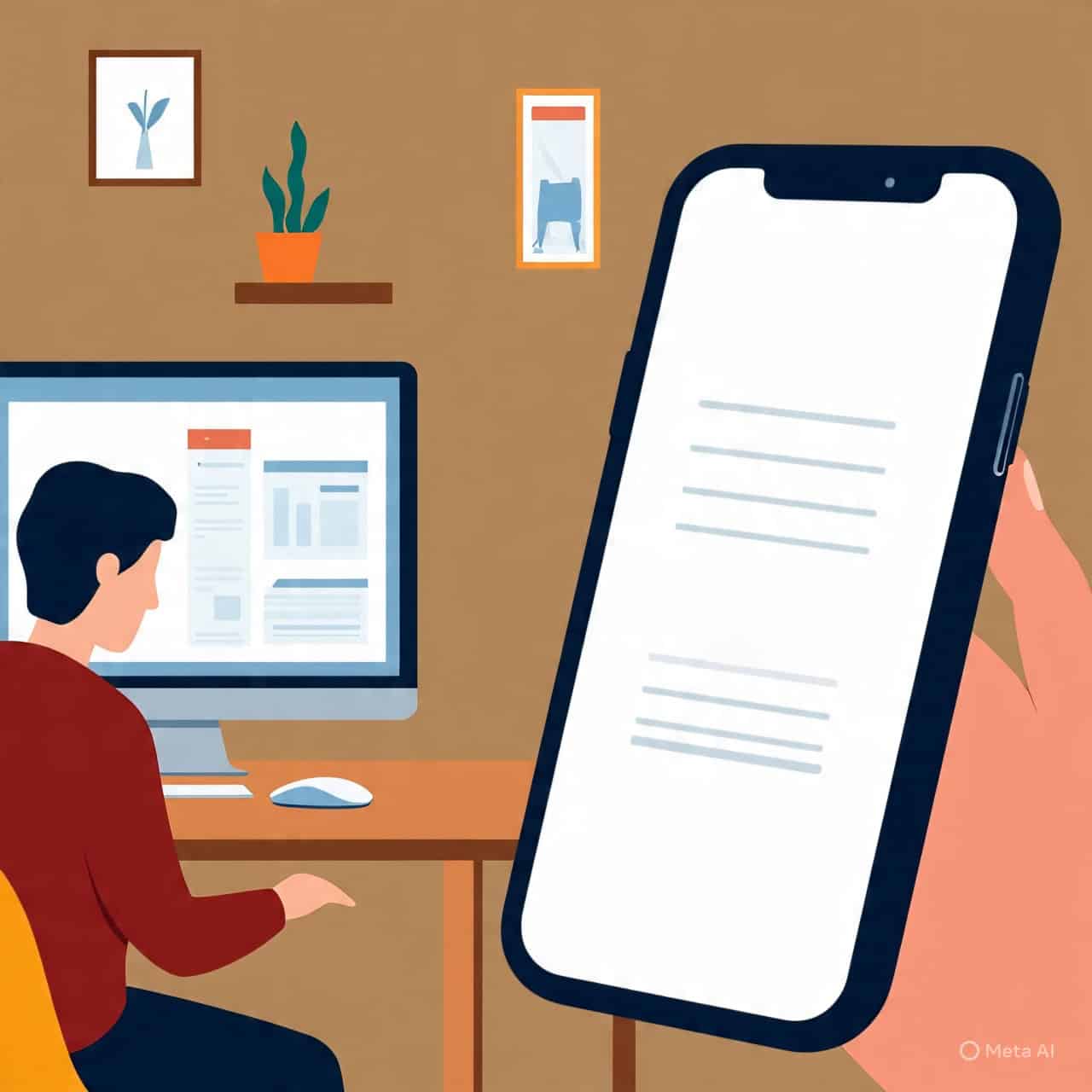
You know how some people love scrolling through their phones late at night, while others prefer shopping on their laptops during lunch break. That’s what this is about.
If you notice people make quick, smaller purchases on phones but spend more time and money on desktops, you should show different deals on each device. Maybe flash sales work better on mobile, while bundle deals do better on desktop.
Complementary Features/Products
Think Amazon’s “frequently bought together” – that’s this strategy in action. When someone buys a printer, you know they’ll need ink soon. Or if they buy running shoes, they might want some socks too.
It’s about making helpful suggestions that actually make sense, not just trying to sell more stuff.
Perfect Your Timing
It’s all about hitting the sweet spot. If someone buys dog food every six weeks, remind them around week five.
Or, if you notice that certain customers always shop during end-of-season sales, make sure they know when those are coming up. It’s like being a helpful friend who remembers these things.
Utilize Historical Data for Insights
This is basically like keeping a diary of what your customers do. If you know Sarah always buys summer dresses in March, or that your coffee sales spike every Monday morning, you can plan ahead.
Look at what worked before – which sales did well, which products people bought together when people shopped most – and use that info to make better decisions going forward.
Making these strategies work together
The real magic happens when you combine these behavioral segmentation strategies. Here’s a practical example:
Imagine you run an online fitness apparel store:
- Use loyalty behavioral data to identify your regular customers
- Check their location for seasonal relevance
- Note which device they prefer shopping on
- Time your communications based on their workout schedule
- Suggest complementary products based on their purchase history
Remember, the goal isn’t just to segment the customer base – it’s to create experiences that make them feel understood and valued.
Ways to use behavioral segmentation in marketing
So, there are four areas in your marketing activities where you use behavior market segmentation –
- Direct mail marketing
- Social media marketing
- App push notifications
- Website personalization
Here’s how:
How to use behavioral segmentation in direct mail marketing?
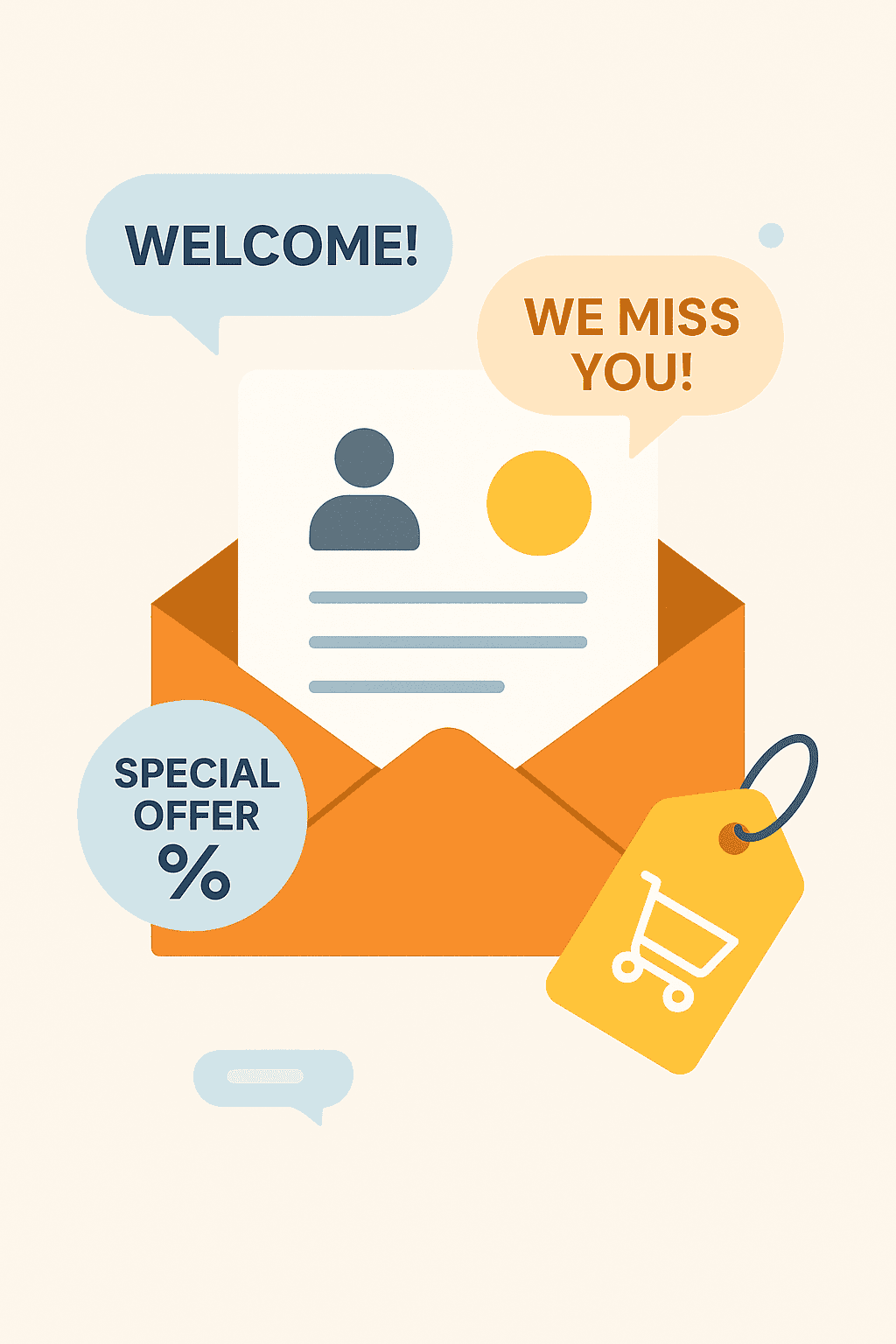
According to McKinsey research, 71% of customers expect personalized interactions, and many feel frustrated when these expectations aren’t met.
One effective way to address this is by using behavioral targeting in your emails.
Smart strategies:
The behavior trigger emails
- Cart abandonment follow-ups (“Hey, you left something awesome behind!”)
- Browse abandonment reminders (“Still thinking about that blue sweater?”)
- Purchase anniversary celebrations (“Remember when you fell in love with our coffee?”)
The welcome package
- Send personalized welcome kits to new customers based on their first purchase
- Include relevant samples or catalogs matching their interests
- Add a handwritten-style note referencing their specific buying behavior
The win-back campaign
- Target customers who haven’t purchased in a while
- Include personalized offers based on their last purchase
- Add a “We miss you!” message with specific references to their favorite products
The VIP treatment
- Create luxe mailings for your top spenders
- Include early access passes to sales
- Add personalized thank you notes with specific purchase history mentions
To automate these kinds of campaigns, businesses often rely on advanced customer segmentation tools that integrate with analytics and email platforms.

5.22 billion people use social media. A social media marketing campaign is your chance to be where your customers may hang out – make it count.
The content strategy
- Create different content for different behavioral segments
- Share user-generated content from your most engaged customers
- Develop targeted ads based on engagement patterns
The community building
- Create exclusive groups for VIP customers
- Host live events timed for your most active users
- Develop challenges based on usage patterns
The smart advertising
- Retarget based on website behavior
- Use dynamic ads showing products people have viewed
How to use behavioral segmentation in app push notifications?
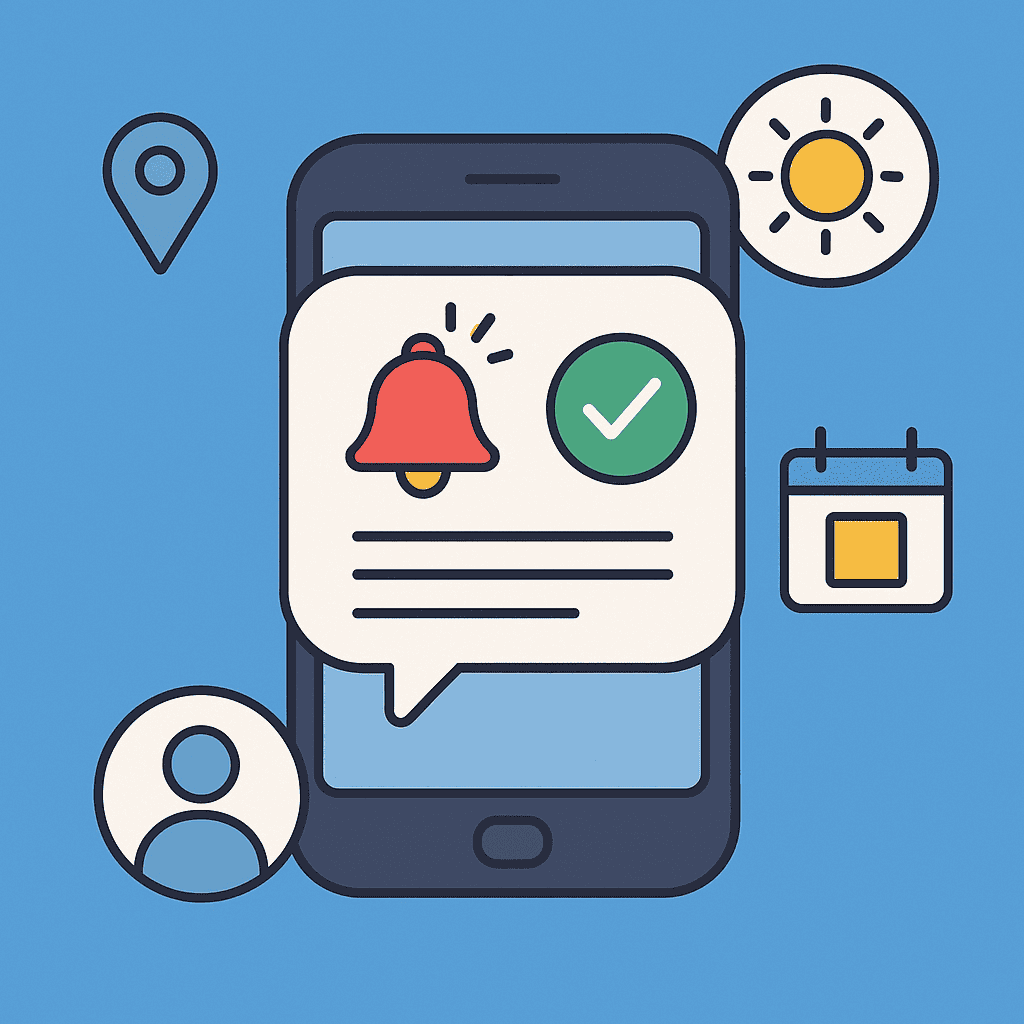
Think of these as little friendly nudges at just the right moment.
Usage-based notifications
- Congratulate milestone achievements
- Remind inactive users of key features
- Share tips based on user behavior
Location-based alerts
- Send store proximity alerts to shoppers
- Share local event information
- Offer weather-related promotions
How to personalize a website with behavioral segmentation?

Make your website feel like it reads minds.
Smart homepage adaptation
- Show different hero images based on past behavior
- Customize navigation for different user types
- Display personalized product recommendations
Behavioral pricing
- Show special offers based on visit frequency
- Display loyalty pricing for regular customers
- Highlight bulk discounts for high-volume buyers
Remember, the key is to make every interaction feel like it’s coming from a friend who really gets you.
Whether it’s a perfectly timed email or a thoughtful direct mail piece, your marketing should feel less like selling and more like helping.
What are real-world examples of behavioral segmentation?
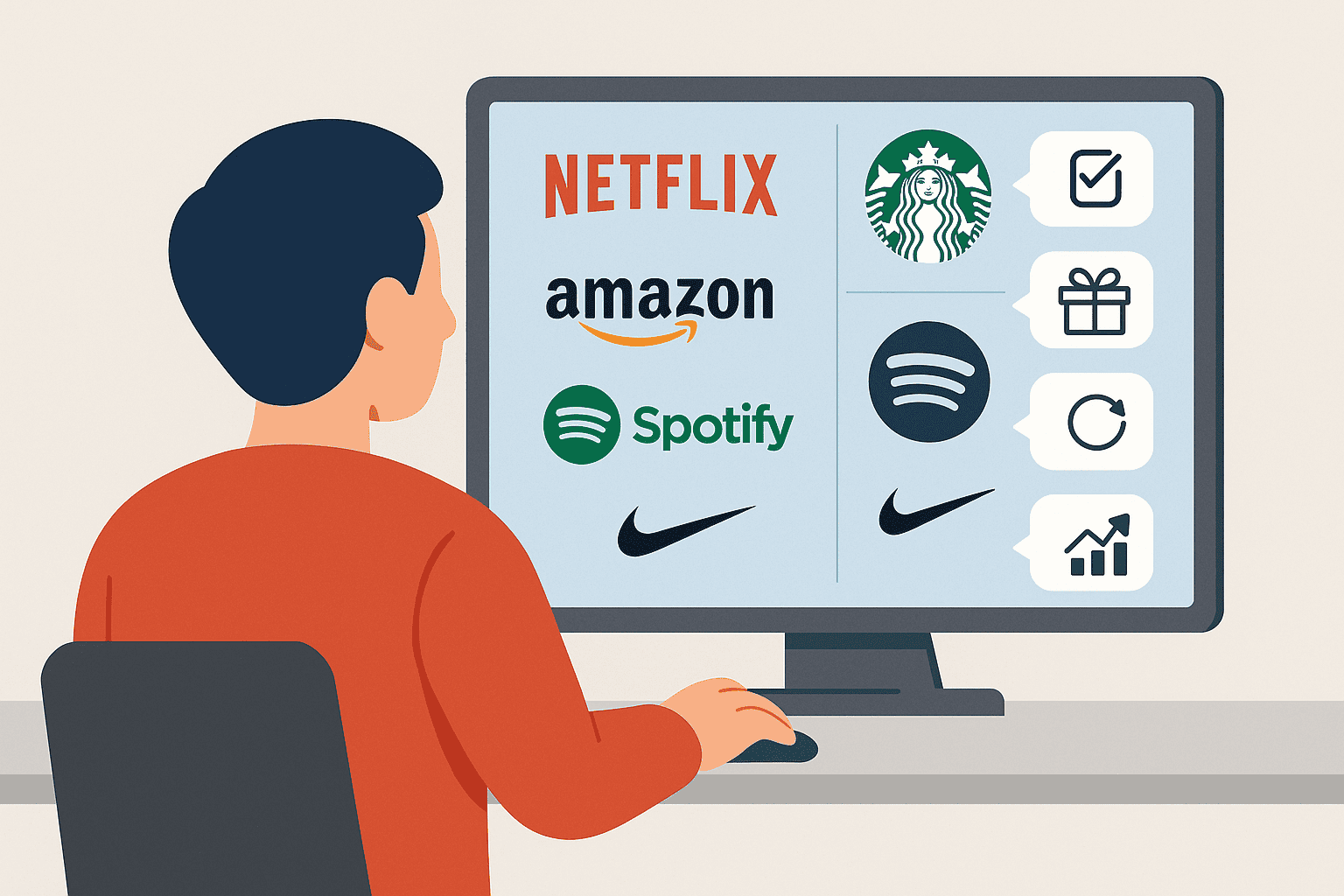
Behavioral segmentation isn’t just a theory; it’s a game-changer in action.
Let’s examine some real-world behavioral customer segmentation examples from top brands that are excelling with data-driven insights.
Netflix’s watch history: They track what shows you binge-watch and what you quit halfway through. Then they serve up those spot-on “Because you watched…” recommendations that somehow always know what you’ll love next.
Starbucks’ rewards: Their app learns if you’re a morning latte person or an afternoon cold brew fan. They’ll ping you with deals right when you usually need your caffeine fix.
Amazon’s smart timing: Ever notice how they remind you to reorder paper towels right before you run out? Yeah, they’re tracking your buying cycles and nailing that timing perfectly.
Spotify’s mood match: Based on when and what you stream, Spotify figures out whether you’re a workout warrior, chill study person, or party playlist type. Then, boom—personalized playlists that just get you.
Nike’s runner segments: Through their running app, they know if you’re a casual jogger or marathon trainer, then customize everything from product recommendations to training plans just for you.
Inspired by these behavioral segmentation examples? Let’s explore how tools like Putler can help you unlock the power of behavioral segmentation for your business.
How does Putler help with behavioral segmentation?
Putler helps in behavioral segmentation by analyzing purchase history, frequency, recency, refunds, and may other key parameters.
It automatically groups customers into segments (loyal, at-risk, one-time, repeat buyers) and offers infinite filter capabilities for creating highly targeted, personalized campaigns.
Here is a small snapshot of how Putler helps businesses with behavioral segmentation.
Smart behavior filters
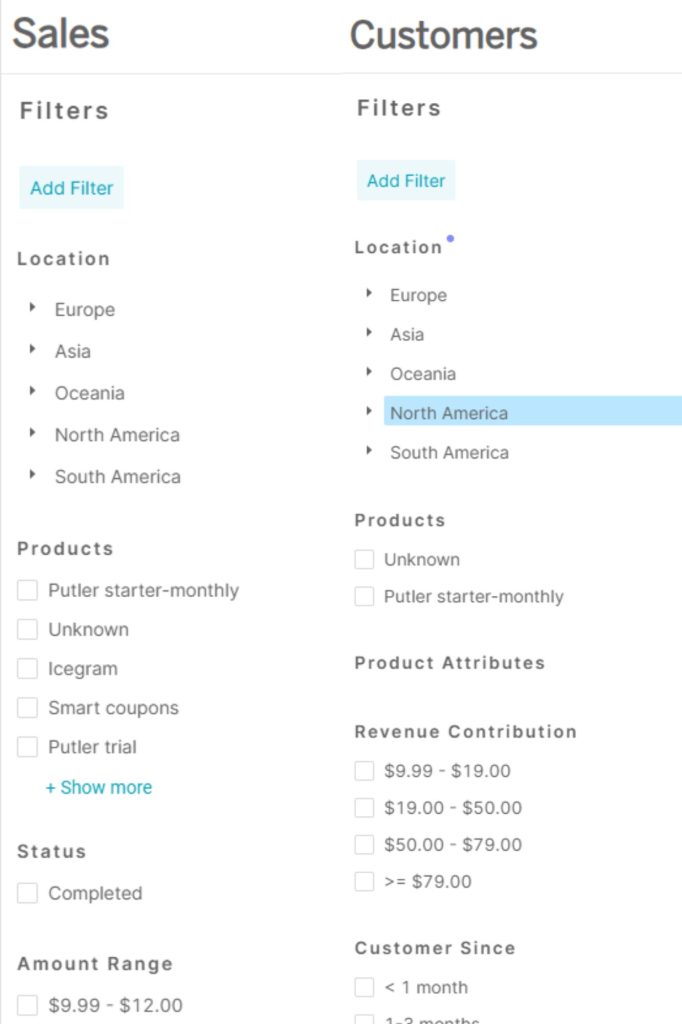
Putler’s filters let you slice and dice your customer data however you need. Look at where they’re from, what they’re buying, how much they’re spending – you name it.
You can even create your own custom filter rules to zero in on specific shopping patterns that matter to your business.
Device and platform
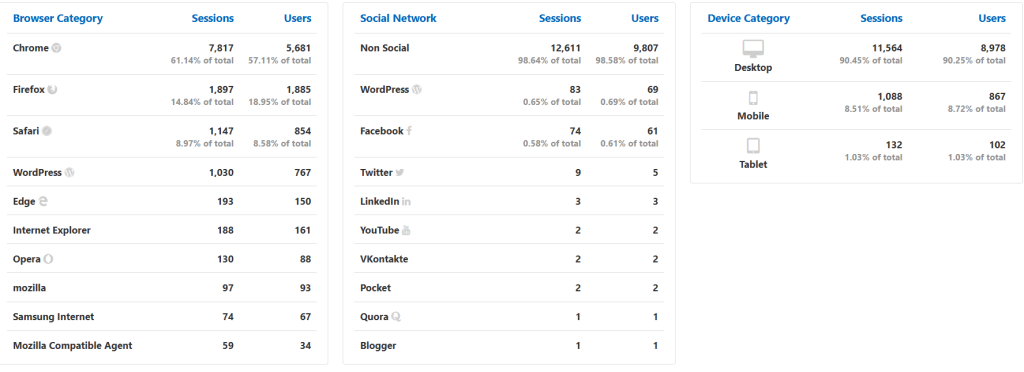
Ever wonder how your customers are shopping? Putler shows you the whole picture – who’s buying on their phones, who prefers laptops, and which browsers they’re using.
Plus, you’ll see which social media platforms are actually bringing in sales, so you can focus your marketing where it counts.
RFM segmentation
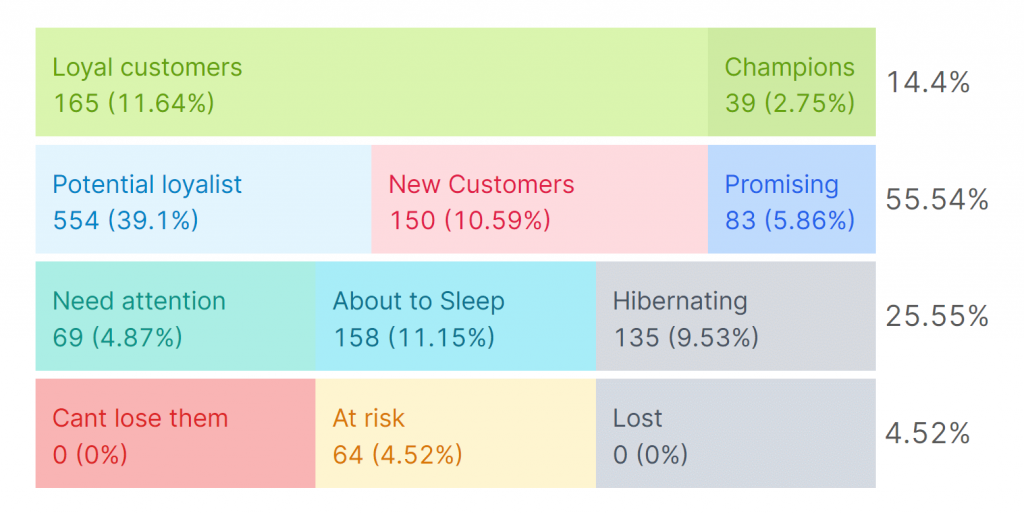
RFM customer segmentation groups your customers based on Recency, frequency, and monetary parameters.
With just one click, you’ll see who your loyal customers are, who might become loyal, and who is at risk of losing – it’s that simple.
Holiday shopping behavior insights
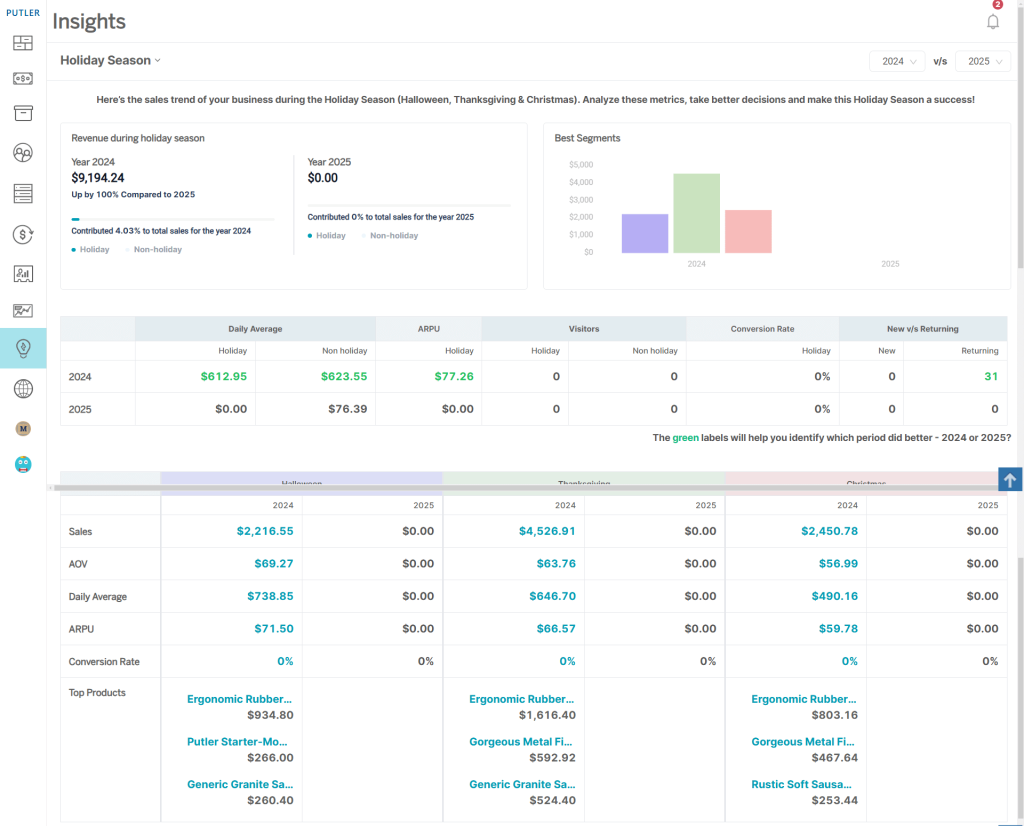
Keep track of how your business performs during the big shopping seasons – Christmas, Halloween, Thanksgiving – you get the idea.
Compare your numbers, see what products are flying off the shelves during each holiday, and figure out which seasonal events are bringing in the most profit.
You’ll also get the scoop on conversion rates across different holidays, helping you plan ahead for the next big rush.
Conclusion
Upon examining this in-depth look at behavioral market segmentation, it becomes clear that going beyond basic demographic segmentation is crucial.
While demographic and psychographic data reveal who customers are, behavioral segmentation reveals what they actually do.
The whole point? Give people what they want, when they want it, and watch your business grow.
